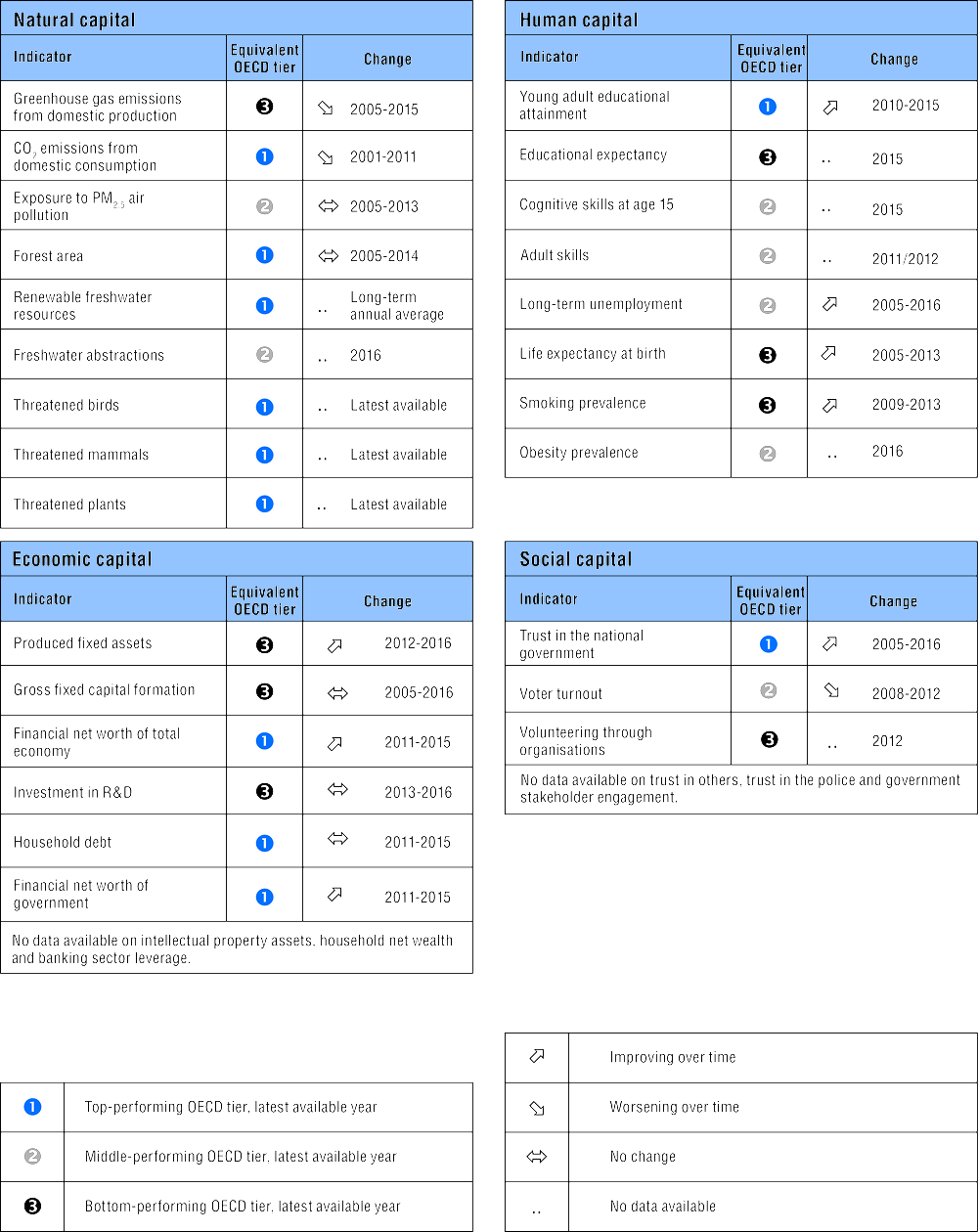How's life in the Russian Federation?
Figure 5.40 shows the Russian Federation’s relative strengths and weaknesses in well-being, with reference to both the OECD average and the average outcomes of the OECD partner countries considered in How’s Life? 2017 (i.e. Brazil, Colombia, Costa Rica, Lithuania, the Russian Federation and South Africa).
The Russian Federation has several areas of strength relative to both the OECD and the partner countries. At 70% in 2016, the employment rate is the highest among the OECD partner countries, and higher than the OECD average (67%). Adults’ upper secondary educational attainment (almost 95%) and students’ cognitive skills at age 15 are the highest among the OECD partner countries, and above the OECD average. Long-term unemployment is low compared to several partner countries, and stands below the OECD average.
Social support is in line with both the OECD and partner country average: 90% of Russians reported having friends or relatives whom they can count on in times of trouble.
The Russian Federation performs better or close to the OECD average, but below the average for partner countries in one area: housing is more affordable, on average, than in the OECD, but is less affordable than among the OECD partner countries.
There are also some areas where the Russian Federation’s performance is above average for the partner countries but below the OECD average. The homicide rate is lower than the average of OECD partner countries, but exceeds the OECD average. 52% of Russians feel safe walking alone at night in the area where they live, above the partner country average (43%) but below that for the OECD (almost 69%).
The Russian Federation also has several areas of weakness compared to both the OECD and the other partner countries. The share of people living in housing without access to basic sanitation is high compared to both the OECD and partner country averages. Life expectancy is close to the average of the partner countries but 9 years below the OECD average. Voter turnout (65% in 2012) stands below both the OECD average (69%) and that of the partner countries (70%). Finally, both air quality and satisfaction with local water quality lie below the OECD and partner country averages.


